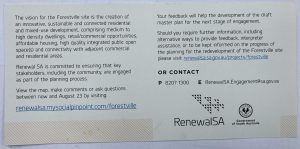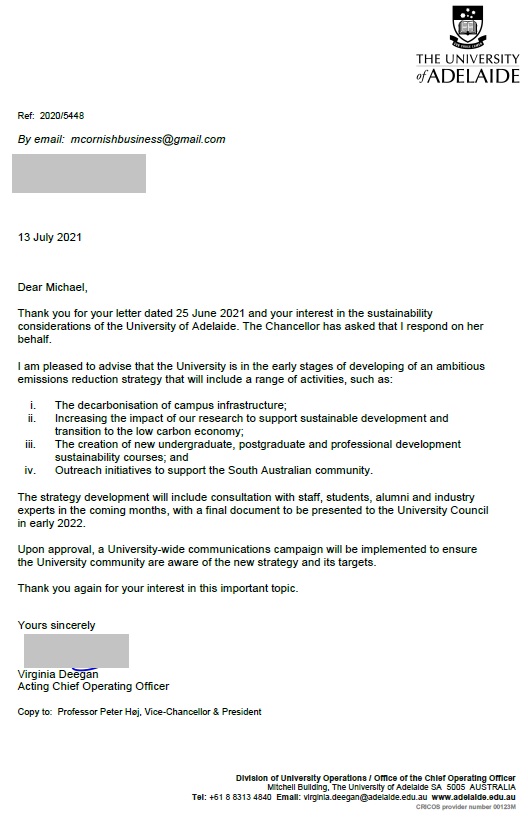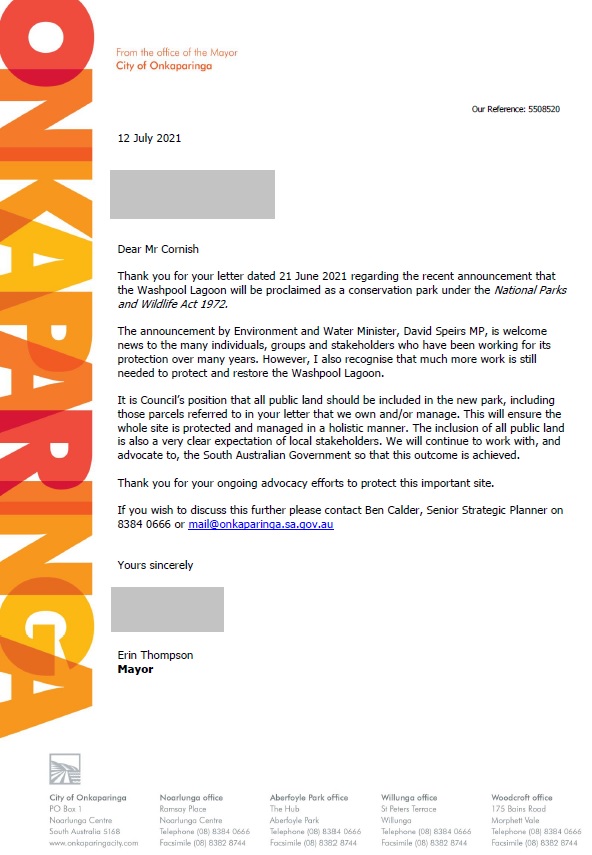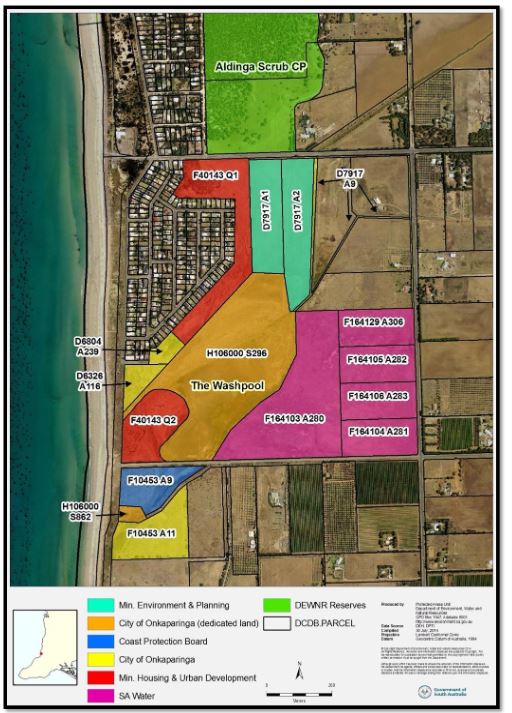Received in the letter box –
Category Archives: Enviro Mails
Update 4: Australian ratification of the Minamata Convention on Mercury
Committee Secretary
Joint Standing Committee on Treaties
PO Box 6021
Parliament House
Canberra ACT 2600
Dear Committee
RE: Submission to the Minamata Convention on Mercury Inquiry
I write to you as a former Senior Policy Adviser to Rebekha Sharkie MP who had carriage of the environment portfolio for Centre Alliance.
Australia is to be congratulated for signing the Minamata Convention on Mercury in October 2013.
The Convention is a global treaty to protect human health and the environment from the adverse effects of mercury. Mercury is a heavy metal that cycles between the atmosphere, ocean and land, and can be toxic to humans and wildlife. According to the booklet of the Convention, “[m]ercury is recognised as a substance producing significant adverse neurological and other health effects, with particular concerns expressed about its harmful effects on infants and unborn children.”[1]
Australia is one of the few developed nations yet to ratify this important treaty.
The Convention is named after Minamata disease, itself named for the poisoning of the Japanese community in Minamata Bay that resulted from eating shellfish and fish containing methylmercury (an organic mercury compound) accumulated from industrial wastewater. Signs and symptoms of Minamata disease include ataxia, numbness in the hands and feet, general muscle weakness, loss of peripheral vision, and damage to hearing and speech. In extreme cases, insanity, paralysis, coma, and death follow within weeks of the onset of symptoms. Whilst conventional mercury poisoning is less severe, it can lead to serious burns; skin-shedding; kidney dysfunction; itching; hair, teeth and nail loss; hypertension, and more besides.
Whilst Australia’s mercury emissions have reduced greatly in recent years due to the deployment of mercury emission reduction technology in key gold-mining processing plants, Australia’s per capita mercury emissions remain higher than the global average[2] as they are insufficiently regulated. More still needs to be done across other sectors, including the production of other metals, fossil fuel combustion, and intentional use and waste.
It is excellent news that the Government has now published its Regulatory Impact Statement (RIS) on the Ratification of the Minamata Convention on Mercury[3] and has now referred the ratification of the Convention to the Committee. The RIS found that there will be no regulatory burden on business or the community, as existing regulatory frameworks broadly align with international obligations under the Convention. Ratification was calculated to provide a net benefit of over $5.9 million over 20 years, and this direct economic benefit will be accompanied by a range of additional social and environmental qualitative benefits.
Furthering the case for ratification, the National Interest Analysis provided to the Committee summarises several compelling reasons for rapid ratification that are worth highlighting, specifically:
“10. Collective global action under the Minamata Convention is the most effective means of protecting Australians from the harmful effects of mercury pollution…
- Due to the widespread adoption of the Convention… ratification would have a low impact on Australian business and industry…
- …several rounds of public and targeted consultation have confirmed broad [domestic] support for ratification and have not identified any significant risks or disadvantages.
- The impetus to ratify now is strong, with business and industry keen for certainty about mercury controls in Australia and for alignment with trading partners…
- Australia is currently unable to fully engage in or guide the direction of the associated scientific and technical bodies to the Convention, and cannot vote on decisions regarding future global controls. Ratification will provide Australia with a seat at the negotiating table, enabling us the opportunity to influence the future direction of the Convention.”[4]
Importantly, the procedural barriers to ratification are also minimal, with the National Interest Analysis concluding that “…ratification can proceed with only minor legislative and policy amendments across all jurisdictions”[5].
In conclusion, I provide two recommendations to the Committee, namely:
Recommendation 1: That the Committee recommend the ratification of the Minamata Convention on Mercury.
Recommendation 2: That the Federal Government finalise the minor legislative changes required to effect ratification by no later than the end of 2021.
Thank you for your time and consideration of my submission.
Yours sincerely,
Michael Cornish
16 / 7 / 2021
[1] UN Environment Programme, Minamata Convention on Mercury – Text and Annexes, September 2017, https://www.mercuryconvention.org/Portals/11/documents/Booklets/COP3-version/Minamata-Convention-booklet-Sep2019-EN.pdf
[2] UN Environment Programme, Technical Background Report for the Global Mercury Assessment, 2013, https://www.amap.no/documents/doc/Technical-Background-Report-for-the-Global-Mercury-Assessment-2013/848
[3] See: https://ris.pmc.gov.au/2021/03/04/ratifying-minamata-convention-mercury
[4] p2, National Interest Analysis: Category 1 Treaty, Minamata Convention on Mercury, Department of Foreign Affairs and Trade, 2021
[5] Ibid.
Update: University of Adelaide and a net zero emissions target
Update 6: Aldinga Washpool
Also confirmed through phone call on 12 July 2021 that the current City of Onkaparinga Council position on the Washpool is contained as a motion within the 4 May 2021 minutes of their Strategic Directions Committee, namely, acceptance of the Item 7.4 Washpool Lagoon – Council’s Role report.
GIS data for SA nature park outlines
NatureMaps Support
Enviro Data SA
SA Department for Environment and Water
e: [email protected]
Dear NatureMaps Support,
Re: GIS data for Nature Parks and Wildlife SA (NPWSA) Reserves outlines
Thank you in advance for your time and consideration of my correspondence and for maintaining the NatureMaps application and website.
I am writing in my personal capacity with a keen interest in environmental conservation and in public accessibility to – and enjoyment of – our natural environment.
Google Maps is widely used by South Australians and visitors to our state to navigate to sites of public interest, including NPWSA Reserves, especially National Parks, Conservation Parks, and Recreation Parks. Currently, Google Maps is missing the outlines of several significant South Australian NPWSA sites, including Para Wirra Conservation Park, Anstey Hill Recreation Park, Cobbler Creek Recreation Park, Glenthorne National Park, and Sturt Gorge Recreation Park, to name but a few. I note that mapping of the NPWSA Reserves (outlines) data layer is available via the NatureMaps application.
For example, since providing GIS coordinates for Lawari CP to Google Maps a few years ago, there have been 50,000 public views of the photos assigned in Google Maps to the Park. Hopefully this demonstrates the public value, and especially tourism value, in having NPWSA sites properly shown on public mapping applications.
May I kindly request, can Enviro Data SA provide me with the GIS data – or instructions on how to access that data – for the NPWSA Reserves (outlines), noting my intention to provide this data to Google Maps?
If not, would Enviro Data SA be willing to provide the data directly to Google Maps?
Would it be possible to set up a process by which the data could regularly be made available (for example, annually) to publicly accessible mapping providers such as Google Maps?
Thank you again for your time and consideration of my correspondence.
Yours sincerely,
Michael Cornish
4 / 7 / 2021
Submission to the Australian aquaculture inquiry
Standing Committee on Agriculture and Water Resources
PO Box 6021
Parliament House
Canberra ACT 2600
e: [email protected]
Dear Committee
RE: Submission to the Australian aquaculture sector inquiry
I write to the Committee as a former Senior Policy Adviser to Ms Rebekha Sharkie MP with carriage of the environment portfolio at the adviser-level for Centre Alliance. This submission is being made wholly in my personal capacity.
Recommendations
Recommendation 1: Pollution from aquaculture urgently needs to be accounted for in the National Pollution Inventory
Aquaculture has a valuable role to play in Australia’s economy; however, like all private industry, it still needs to operate within a reasonable social licence. The fact that aquaculture has been exempted from providing account to the National Pollution Inventory has no basis in public policy, and a complete basis in politics. This exemption for aquaculture needs to be removed as a matter of priority.
Recommendation 2: Establish a moratorium on aquaculture in Fitzgerald Bay, SA
The Giant Australian Cuttlefish that aggregates in the breeding season in significant numbers at Point Lowly near Whyalla is a major South Australian ecotourism drawcard. Aquaculture used to operate in Fitzgerald Bay (directly to the north of Point Lowly) and created significant nitrogenous pollution, leading to the rapid decline of Cuttlefish population numbers. Since the closure of those aquaculture operations, the Cuttlefish population has experienced recovery.
There are currently plans to restart aquaculture operations in Fitzgerald Bay without regard to the expected significant impact upon the Cuttlefish and destruction of its ecotourism benefits. It may well be possible for aquaculture – properly monitored for nitrogenous (and other) pollution and operating within strict limits – to operate in coexistence with the Cuttlefish.
However, until there is a requirement for such aquaculture pollution to be properly measured (and therefore properly regulated and limits properly enforced), there should be a moratorium on aquaculture in Fitzgerald Bay.
My thanks to the Committee for their consideration of my submission.
Yours sincerely,
Mr Michael Cornish
2 / 7 / 21
University of Adelaide and a net zero emissions target
The Hon Catherine Branson AC QC
Chancellor
The University of Adelaide
SA 5005
Dear Chancellor,
RE: The University of Adelaide and a net-zero emissions target
I hope this correspondence finds you well; thank you in advance for your time and consideration. I am writing to you in your capacity as Chair of the University of Adelaide Council and would be appreciative if you were able to bring my correspondence to the attention of the Council.
I am writing in my personal capacity as an alumni and former staff member of The University of Adelaide. To avoid all doubt, I am not writing in any way in my capacity as a current employee within the Group of Eight directorate.
During my time as former Senior Adviser to Ms Rebekha Sharkie MP, an intellectual interest in climate change and environmental conservation has developed through greater understanding into an active and keen interest. It is through this lens that I seek to encourage the university to publicly adopt a clear emissions target – ideally, a minimum target of net zero (CO2 equivalent) emissions by 2030. I have searched unsuccessfully for any such commitment that the University may have made.
None of this is to detract from the very good work that The University of Adelaide has already undertaken to reduce its environmental footprint, such as its commitment as a Carbon Neutral Adelaide Partner, and work done under its sustainability engagement program, Ecoversity. These initiatives should rightfully be recognised as excellent steps in the right direction to ensure the university is doing its part in safeguarding Australian and global livelihoods and our shared environment.
However, other leading Australian peer universities have already made public announcements to net zero emissions targets, including the Australian National University (“below zero by 2030”[1]), The University of Sydney (“Net zero emissions by 2030”[2]), The University of Melbourne (“carbon neutral before 2030”[3]), and Monash University (“Net Zero emissions by 2030”[4]), to name but a few.
The University of Adelaide has an opportunity to position itself on climate change as ‘running with its peers’, although that opportunity may soon pass.
May I kindly request, is the University Council (or university administration) actively considering a net zero emission target?
If so, what is the likely timeline on a decision on that target?
If not, I kindly and strongly encourage the Council to actively deliberate on setting a net zero emissions target and set a deadline for that decision.
Thank you again for your time and consideration of my correspondence.
Yours sincerely,
Michael Cornish
25 / 6 / 2021
Cc Vice-Chancellor, Professor Peter Høj AC
[1] See: https://www.anu.edu.au/news/all-news/anu-zeroes-in-on-negative-carbon-emissions-by-2030
[2] See: https://www.sydney.edu.au/about-us/vision-and-values/sustainability.html#climatechange
[3] See: https://www.unimelb.edu.au/alumni/news/universitys-sustainability-plan-published
Update 5: Aldinga Washpool
The Hon Rob Lucas MLC
Treasurer
GPO Box 2264,
Adelaide SA, 5001
Dear Treasurer,
Re: Aldinga Washpool, and the new Conservation Park
I write to you in your capacity as the Minister responsible for Housing and Urban Development. As a former Senior Adviser to Ms Rebekha Sharkie MP, I am writing to you in my personal capacity and out of a keen interest in environmental conservation, and for the Aldinga Washpool site in particular.
Firstly, may I commend your Government for its decision to provide permanent conservation protection to the Aldinga Washpool site within the marginal electorate of Mawson[1]. It has yet to be determined whether some of the land at the Washpool site will become part of the newly announced Conservation Park, including parcels of land which I understand to be owned by the Minister responsible for Housing and Urban Development, namely:
- F40143 Q1; and
- F40143 Q2.
As you might imagine, I strongly urge the State Government to follow through on the spirit of its commitment to the future of the site by contributing these parcels to the new Conservation Park. Parcel F40143 Q2 is clearly integral to the actual watercourse itself, but the important positive impacts of restoring the directly adjacent areas (such as parcel F40143 Q1) on the environmental outcomes for the Washpool site, such as with surface run-off and the hydrological balance in the waterbody – and the countervailing negative effects should this buffer zone be removed – should not be underestimated.
May I kindly request an update on whether these parcels are still under the ownership (and/or care) of the Minister responsible for Housing and Urban Development, and whether there is active consideration for their addition to the new Conservation Park?
If so, what is the likely process and timing for a Ministerial decision to be made?
Thank you again for your Government’s commitment of support for permanent conservation of the Washpool site and for your time and consideration.
Yours sincerely,
Michael Cornish
23 / 6 / 2021
Cc Mr Geoff Hayter, Chair, Washpool Coalition
[1] As per: https://www.premier.sa.gov.au/news/media-releases/news/aldinga-washpool-to-become-a-protected-area
Update 4: Aldinga Washpool
Mayor Erin Thompson
City of Onkaparinga
PO Box 1
Noarlunga Centre SA 5168
Dear Mayor Thompson,
Re: City of Onkaparinga, Aldinga Washpool, and the new Conservation Park
I hope this correspondence finds you well; you would remember me from my time as former Senior Policy Adviser to Ms Rebekha Sharkie MP. Thank you for your own ongoing efforts and support for permanent conservation of the Aldinga Washpool site.
I am writing to you in my personal capacity and out of a keen interest in environmental conservation. The permanent conservation of Aldinga Washpool was an issue I worked upon during my employment with Ms Sharkie, and since then I have been providing advice to the local Washpool Coalition and undertaking my own advocacy on the issue with the State Government.
I too am concerned that there are land parcels at the Aldinga Washpool site that have yet to be confirmed will be a part of the eventual conservation park (as shown in the map at: https://www.parks.sa.gov.au/park-management/aldinga-washpool). These include land parcels which I understand are directly owned by the City of Onkaparinga, or is Crown land under their care, namely:
- D7917 A9
- D6804 A239
- D6326 A116
- H106000 S862
- F10453 A11
May I kindly request an update on whether these parcels are still under Council ownership (and/or care), and whether there is active consideration for their addition to the new Conservation Park?
If so, what is the likely process (such as a vote at Council) and timing for a decision to be made by the City of Onkaparinga?
Thank you again for your support on this issue and for your time and consideration.
Yours sincerely,
Michael Cornish
21 / 6 / 2021
Cc Mr Geoff Hayter, Chair, Washpool Coalition
Update 3: Aldinga Washpool
[Map reproduced from: https://www.parks.sa.gov.au/park-management/aldinga-washpool]

[Map reproduced from page 8, Washpool Lagoon Vegetation Survey and Mapping 2016, available here: https://www.naturalresources.sa.gov.au/files/sharedassets/adelaide_and_mt_lofty_ranges/coast_and_marine/aldinga-washpool-lagoon-vegetation-survey-mapping-2016-rep.pdf]




